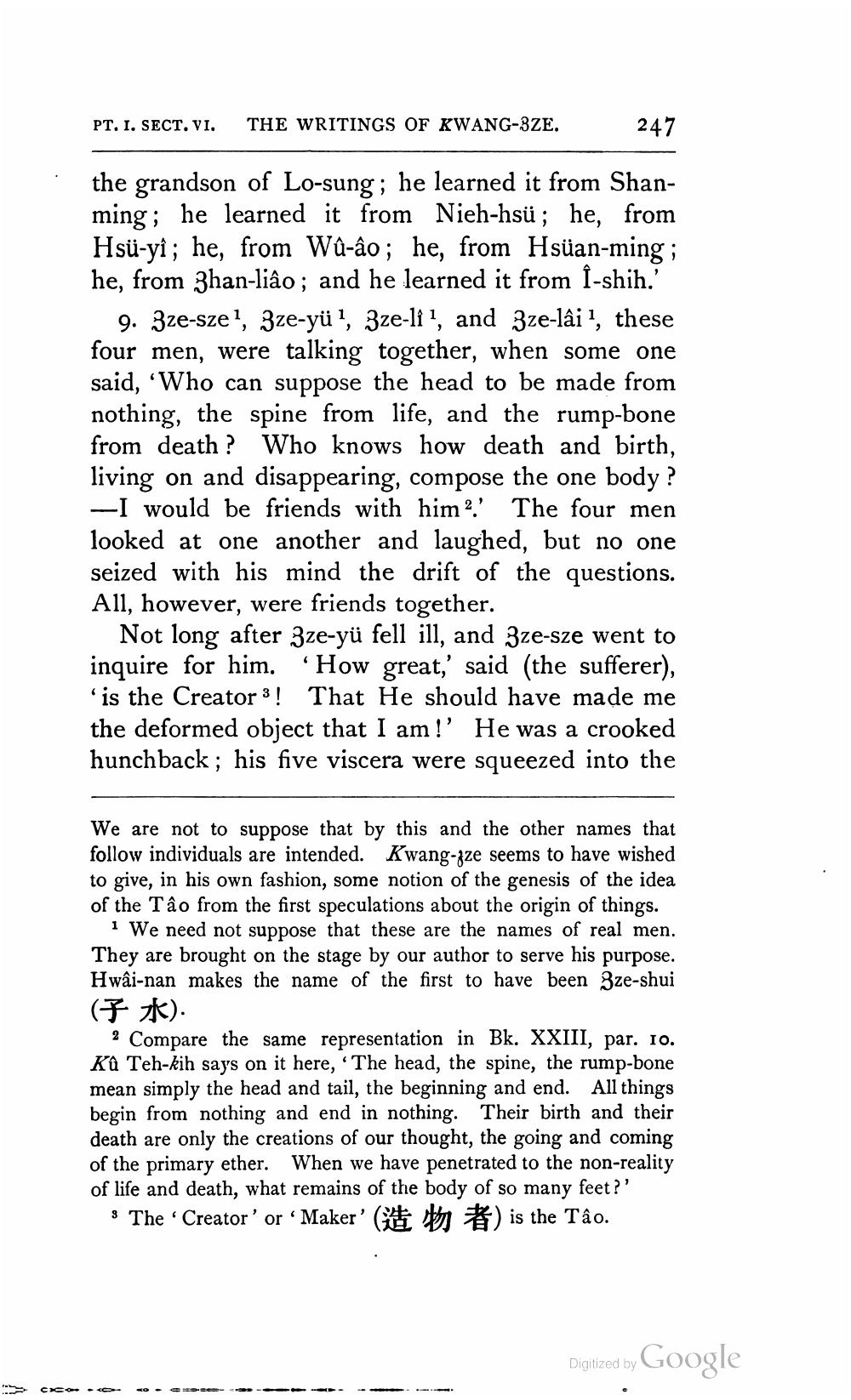________________
PT. I. SECT. VI. THE WRITINGS OF KWANG-BZE.
247
the grandson of Lo-sung; he learned it from Shanming; he learned it from Nieh-hsü; he, from Hsü-yi; he, from Wû-âo; he, from Hsian-ming ; he, from Zhan-liâo ; and he learned it from i-shih.'
9. 3ze-sze, 3ze-yü 1, 3ze-li", and Zze-lâi ", these four men, were talking together, when some one said, 'Who can suppose the head to be made from nothing, the spine from life, and the rump-bone from death? Who knows how death and birth, living on and disappearing, compose the one body? - I would be friends with him?' The four men looked at one another and laughed, but no one seized with his mind the drift of the questions. All, however, were friends together.
Not long after Zze-yü fell ill, and 3ze-sze went to inquire for him. “How great,' said (the sufferer), 'is the Creator 3! That He should have made me the deformed object that I am!' He was a crooked hunchback; his five viscera were squeezed into the
We are not to suppose that by this and the other names that follow individuals are intended. Kwang-jze seems to have wished to give, in his own fashion, some notion of the genesis of the idea of the Tâo from the first speculations about the origin of things.
1 We need not suppose that these are the names of real men. They are brought on the stage by our author to serve his purpose. Hwâi-nan makes the name of the first to have been Zze-shui (F ).
2 Compare the same representation in Bk. XXIII, par. 10. Kû Teh-kih says on it here, ‘The head, the spine, the rump-bone mean simply the head and tail, the beginning and end. All things begin from nothing and end in nothing. Their birth and their death are only the creations of our thought, the going and coming of the primary ether. When we have penetrated to the non-reality of life and death, what remains of the body of so many feet?' 9 The Creator' or Maker'
the Tâo.
Digitized by Google




